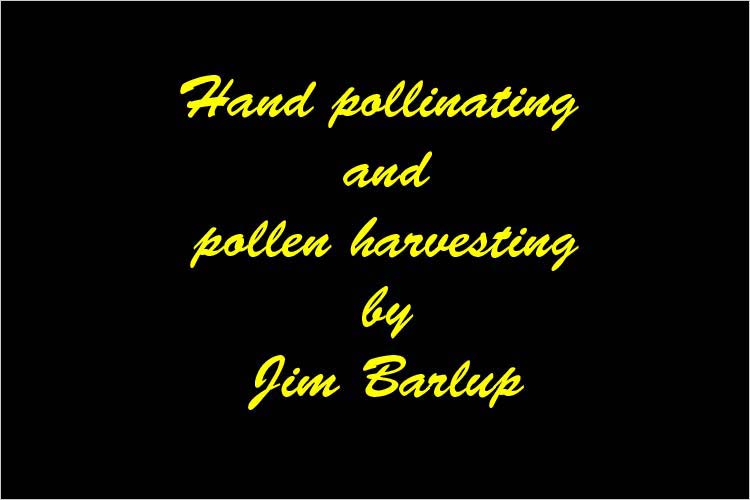

This pot contains the pollens chosen by Jim for this morning's hybridization. They are in gelatine capsules.

Pollen choice. Jim works in an environment sheltered from the rain. The door is closed with a mosquito screen.

Firstly write the father's name on a label.

Then tie this label around all the flower pedicels to be pollinated.

Jim takes the capsule containing the pollen.

Using his index finger he pats the capsule to concentrate the pollen in the bottom.

With a toothpick he takes some of the pollen from the bottom of the capsule and applies it to the stigmas.

He repeats the process as often as there are stigmas to be pollinated.

All the stigmas of this flower cluster are now pollinated. They are not protected as they are not in the open air.

When there is very little pollen remaining in the capsule Jim puts the stigma directly into the capsule.

Now for a double action : prepare the flowers to be pollinated and retrieve the pollen from this hybrid.

The stamens are carefully put into a plastic container.

This job requires meticulous care. Nearly all the flowers will be prepared for future pollinisation.

Collection of the stamens and of a few flowers.

In his basement Jim writes the name of this hybrid on a sheet of white paper.

Using fine scissors he cuts off the anthers which fall onto the sheet of paper.

It takes a while for Jim to recover all the anthers.

Tweezers are used to remove everything that is not an anther.

When the tidy up is finished the edges of the sheet of paper are folded and the pollen is left to dry using a drying agent (silica gel).

After drying the pollen is stored in a gelatine capsule (sold for pharmaceutical use).

First, write the name on a label of which we will only keep the strap.

Slip the anthers into the capsule. These anthers are from a previous collection; they are dry.

Replace cap on the capsule.

Attach the strap to the capsule.

Make sure it sticks well to the capsule.

Job done.

Don't forget to disinfect the scissors between each pollen.


